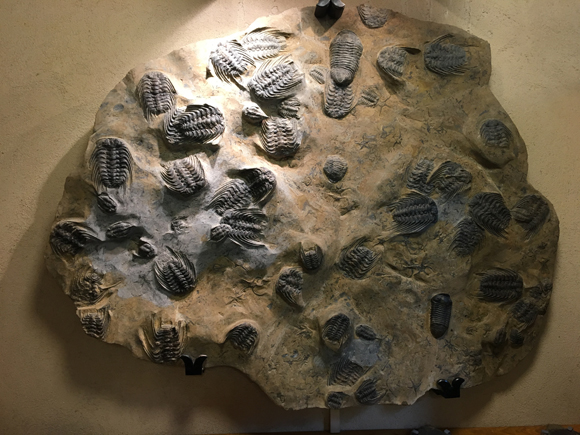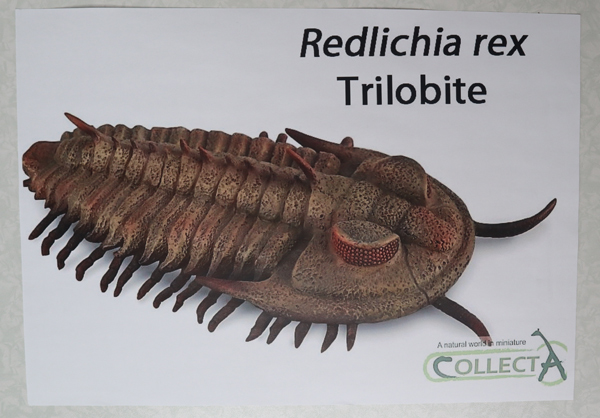Newly published research has provided palaeontologists with remarkable new evidence shedding light on the evolution of gill structures in the Arthropoda. Writing in the academic journal “Science Advances”, researchers from the University of California Riverside in conjunction with colleagues from the Indian Statistical Institute (Kolkata) and the American Museum of Natural History (New York), have demonstrated that some species of trilobite had gills on their upper limbs.

Exquisitely Preserved Fossils
Many thousands of species of trilobite have been named and described. However, very few fossils of these enigmatic, extinct members of the Arthropoda preserve soft parts of the animal’s bodies.

Picture credit: Everything Dinosaur
Fossils Preserved as Fool’s Gold Reveal New Information
The segmented limbs of trilobites were biramous, that is the limb was spilt into two branches. The function of the upper element of this limb has long been debated. It had been thought by some scientists that is served a respiratory function, but the evidence to support this hypothesis was lacking.

Picture credit: Everything Dinosaur
The picture (above) shows a typical trilobite body plan. It is a model of a trilobite species from the CollectA model range.
To view this range: CollectA Age of Dinosaurs Prehistoric Life Models.
Remarkably detailed fossil specimens preserved in iron pyrite were subjected to scans using computerised tomography (CT scans). The computer generated images revealed dumbbell-shaped filaments in the upper limb branch that are morphologically comparable with gill structures in crustaceans.

The Beecher’s Trilobite Bed
The beautifully preserved specimens with their soft parts replaced by pyrite come from the famous Beecher’s trilobite bed which is a Late Ordovician Lagerstätte with over 85% of the fossils found at the site representing the trilobite Triarthrus eatoni.
Lead author of the paper PhD student Jin-bo Hou (University of California Riverside) commented:
“Up until now, scientists have compared the upper branch of the trilobite leg to the non-respiratory upper branch in crustaceans, but our paper shows, for the first time, that the upper branch functioned as a gill”.
The research team mapped how blood would have filtered through chambers in these delicate structures, absorbing oxygen as it progressed through the tiny structures which measure around 30 microns across, that’s three times smaller than the diameter of a human hair.
Comparing Trilobites with Extant Arthropods
These structures appear much the same as gills in modern marine arthropods like lobsters and crabs, but crucial anatomical differences were identified, helping scientists to better understand the phylogeny of the Trilobita within the arthropod phylum. Comparing the specimens in pyrite to another trilobite species (Olenoides serratus), gave the team additional information about how the filaments were arranged relative to one another and to the legs.
The researchers concluded that the upper limb’s partial articulation to the body via an extended membrane is morphologically comparable to the junction of the respiratory book gills of extant horseshoe crabs (Limulus). Furthermore, this morphology differentiates it from the typically robust junctions associated with crustaceans and the extinct sea scorpions.
The scientific paper: “The trilobite upper limb branch is a well-developed gill” by Jin-bo Hou, Nigel C. Hughes and Melanie J. Hopkins published in Science Advances.
Visit Everything Dinosaur’s award-winning website: Everything Dinosaur.






Leave A Comment